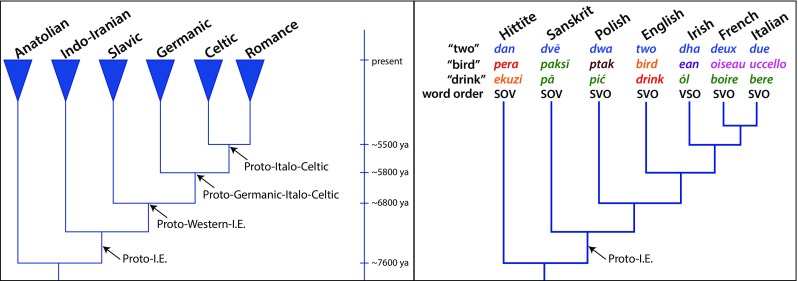Fig. 1.

a A phylogeny of the Indo-European languages showing several of the major groups and the historical branching points. Triangles at the tips of the tree indicate groups of contemporary languages that share a common ancestor. The base or root of the tree corresponds to the ancestral or proto-Indo-European language that might have been spoken sometime around 6,000 (Chang, Cathcart, Hall, & Garrett, 2015) to 7,500 years ago (Bouckaert et al., 2013). Timings shown follow Bouckaert et al. (2013); b A phylogeny highlighting languages from each of the major groups in a and showing the word in that language for two, bird, and drink. Words represented with the same color are in the same cognate class, indicating they derive from a common ancestral word. The words for two are cognate across the entire Indo-European language family suggesting their common ancestor was present in proto-Indo-European. Words for bird are much younger, and drink is intermediate. “Word order” denotes the dominant ordering of subjects (S), verbs (V), and objects (O) in main clauses of a language. The presence of SOV in Hittite and Sanskrit—two languages that branched off early from the root of the tree—suggests that SOV is the ancestral state, and statistical modelling supports this inference (text)
